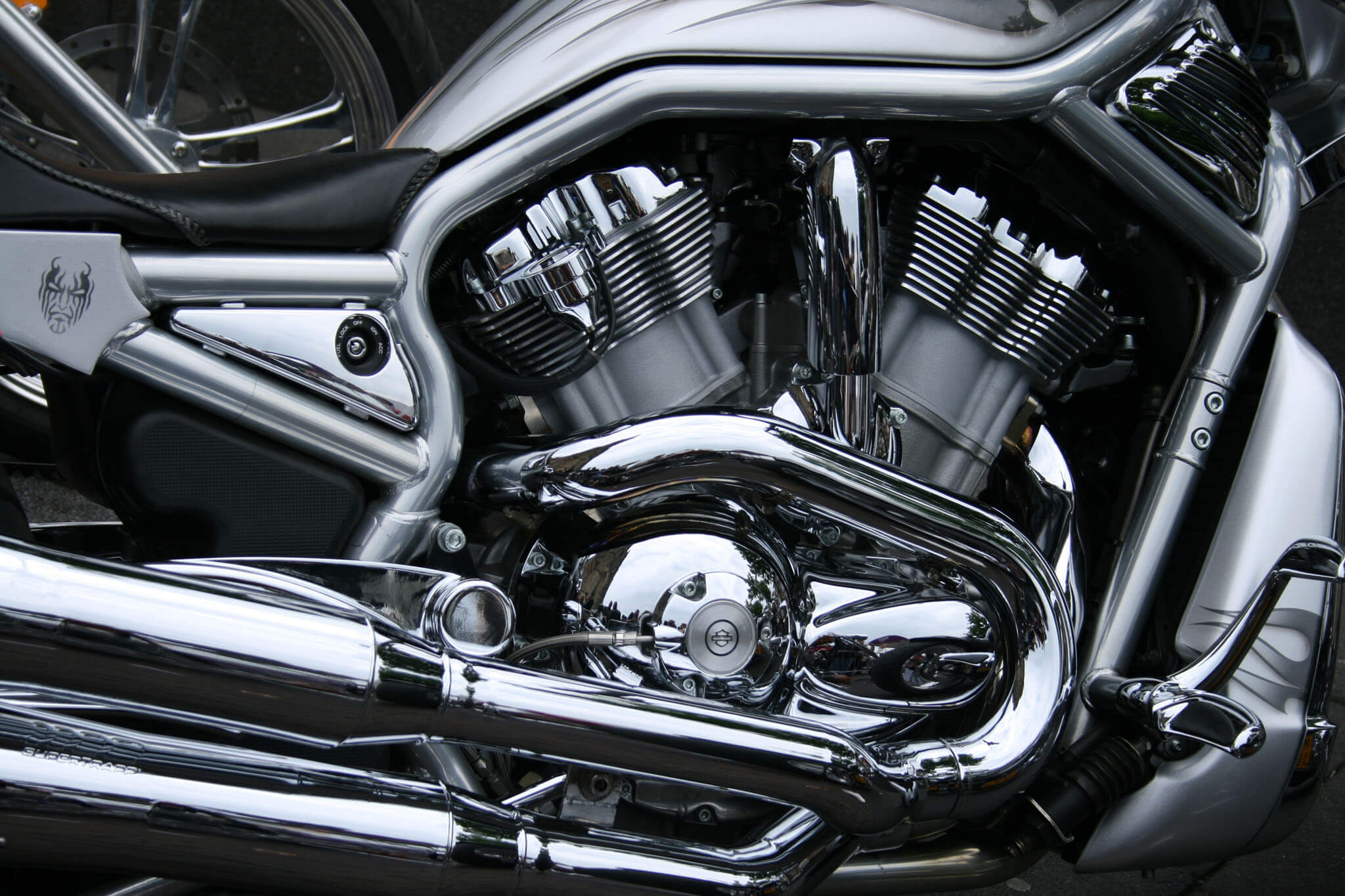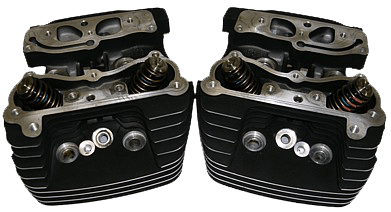
Harley
We have a great selection of cylinder head components for Harley Davidsons including stainless and titanium valves, chromoly and titanium retainers, performance valve springs, re-engineered chromoly spring seats, fully machined valve locks, and iron or bronze valve guides.For the Evo and Twin Cam heads, we offer 5 different grades of valves from budget performance to severe duty. Most are available in stock head diameter as well as oversize.
Please contact us for price and availability.


Shop around, we offer the BEST bang for your buck on Harley heads!
All of our Evo and Twin heads get the same treatment: 1.900 or 1.940 intake valves respectively, 1.615 exhaust valves, new performance springs with titanium retainers and machined locks, a 3-angle valve job and fully ported and flow tested, your heads or exchange for $695.00 per pair.
*2005 & Up – $725.00 per pair
*In 2005 Harley heads changed to a 7mm valve stem and a single ovate wire conical spring. These parts are slightly more expensive than the standard parts for the earlier heads.

Screamin Eagles
If you’re thinking of splurging for a set of Screamin Eagles, consider sending them to us for porting. Notice in the chart below that our ported stock head actually outflows the unported Screamin Eagle. In ported form the Screamin Eagle is a superior head, so if you choose to go that route, we can re-do the valve job and fully port your heads for $495.00 per pair if we don’t replace any parts.
Contact Us
From Stock Restoration to Race Only applications, I can improve and maximize the efficiency of any cylinder head, stock or aftermarket. Achieve increased horsepower and improved fuel economy. I have experience with virtually all makes and brands.
Head Flow
Horsepower is directly related to air flow; the more flow, the more power. This graph illustrates the contrast between ported and unported heads. The Screamin Eagles are on the 95 inch Dyna Wide Glide that won his class in the dyno contest at the Street Vibrations Reno Run in 2003. It is currently making over 100 h.p. with relatively low valve lift so it’s still very streetable.

The heads represented by the green bar were ported at Jerry Branch’s Flowmetrics and are shown solely for the sake of comparison. The Branch name is legendary in the world of high horse power Harleys and we’re honored to be able to produce a high caliber product with the same legendary performance.

There are shops that are producing slightly higher cfm from their heads, but they are increasing the intake port volume to get this extra flow. When your port volume increases, the velocity of the air / fuel charge slows down and your low end power decreases. The flow numbers we’ve shown above were achieved without dramatically increasing the volume of the port, thus increasing the torque output throughout the rpm range including down low where you need it!
